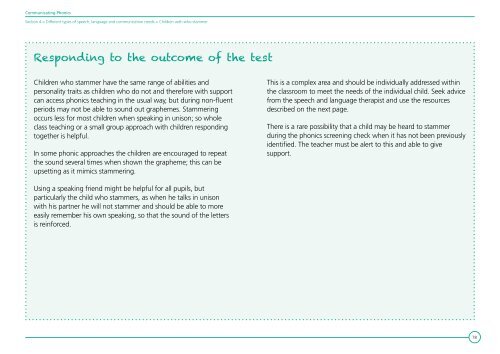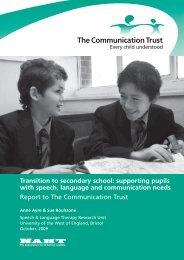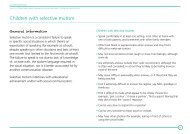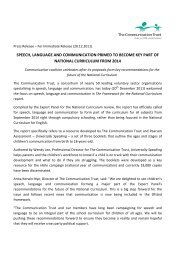Communicating Phonics - The Communication Trust
Communicating Phonics - The Communication Trust
Communicating Phonics - The Communication Trust
You also want an ePaper? Increase the reach of your titles
YUMPU automatically turns print PDFs into web optimized ePapers that Google loves.
<strong>Communicating</strong> <strong>Phonics</strong>Section 4 > Different types of speech, language and communication needs > Children with who stammerResponding to the outcome of the testChildren who stammer have the same range of abilities andpersonality traits as children who do not and therefore with supportcan access phonics teaching in the usual way, but during non-fluentperiods may not be able to sound out graphemes. Stammeringoccurs less for most children when speaking in unison; so wholeclass teaching or a small group approach with children respondingtogether is helpful.In some phonic approaches the children are encouraged to repeatthe sound several times when shown the grapheme; this can beupsetting as it mimics stammering.This is a complex area and should be individually addressed withinthe classroom to meet the needs of the individual child. Seek advicefrom the speech and language therapist and use the resourcesdescribed on the next page.<strong>The</strong>re is a rare possibility that a child may be heard to stammerduring the phonics screening check when it has not been previouslyidentified. <strong>The</strong> teacher must be alert to this and able to givesupport.Using a speaking friend might be helpful for all pupils, butparticularly the child who stammers, as when he talks in unisonwith his partner he will not stammer and should be able to moreeasily remember his own speaking, so that the sound of the lettersis reinforced.78
















